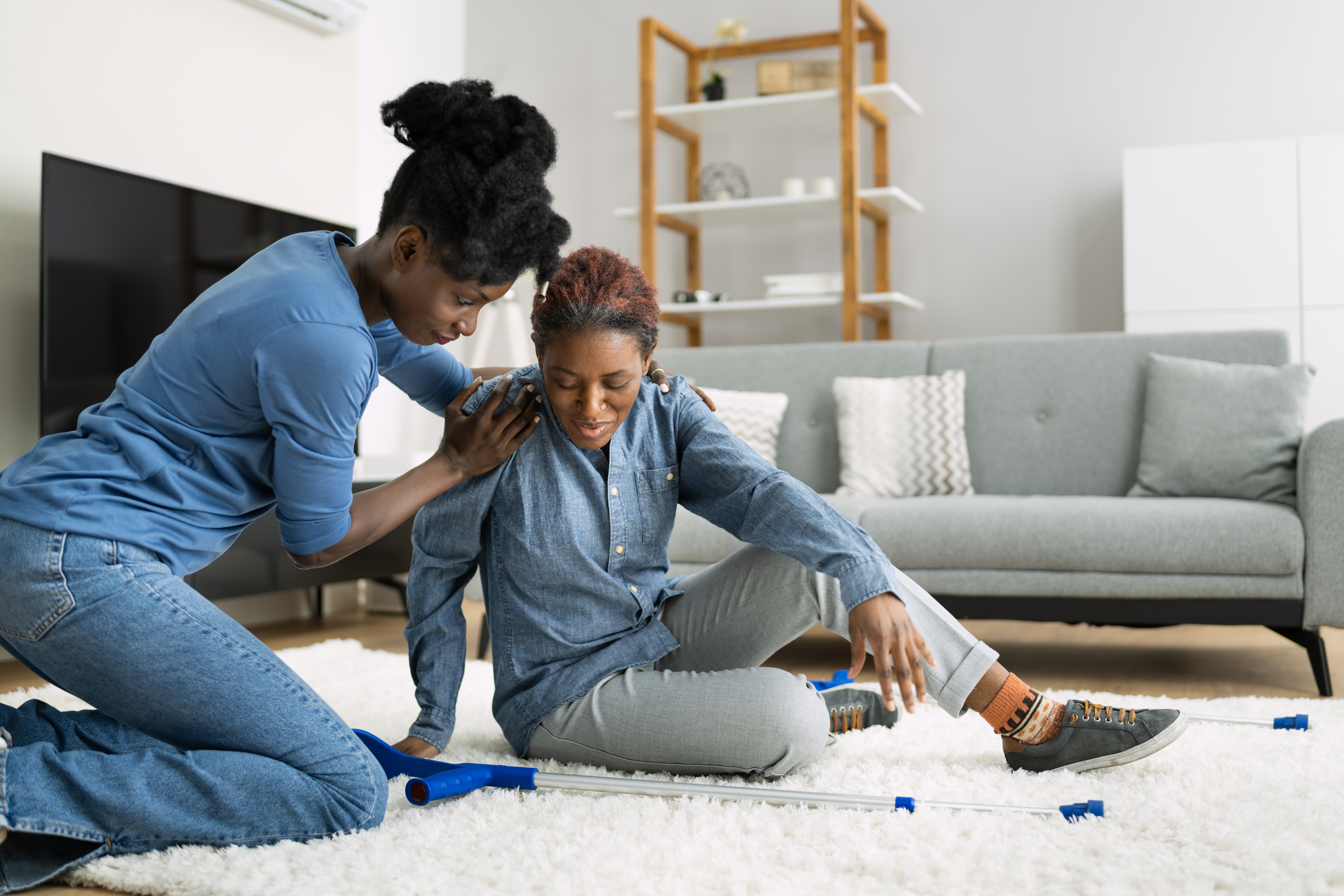Authors
Stephanie Nolan , Occupational Therapist & Michelle H. Cameron , Doctor of Physical Therapy
Close

21 Dec 2017 | ~4:38 Engagement Time
Fall prevention is top of mind for many people living with multiple sclerosis. Do you wonder if you fall more than other people without MS? Do you want to know what to do to prevent falling? This article summarizes what we know about how many people with MS fall, the many possible causes of falls in people with MS, and provides tips and suggestions for things you can do to reduce the risk of falling.
Most people with MS fall, and many fall frequently.
Research shows that:
Although most falls in people with MS don’t cause severe injuries, some do. Falling also often reduces a person’s confidence, and this leads to them avoiding activities that feel too risky, sometimes leading to isolation and limited engagement in meaningful activities. Everyone would certainly prefer not to fall.
Although we don’t know what causes each fall in each person with MS, there are some common factors that seem to put people at greater risk. People who have had MS for longer and those with progressive MS are more likely to fall. Those with more disability overall, and particularly those with worse balance, slower walking, and more cognitive problems, are more likely to fall. The most consistently found risk factor for falls is that people who use a walking aide, such as a cane or a walker, particularly if they are new users of a walking aide, are also more likely to fall.
Fortunately, there are many things you can do to help reduce your risk of falling. These include:
Evidence suggests that working with a physical therapist to select the right walking aid, fit the walking aid correctly, and then practice using it, can help prevent falls.
Explore the Building Your Balance and Walking Challenges MS Moves exercise routines for professionally led exercises designed to improve your balance and walking.
Bathroom equipment (e.g. raised commodes, grab bars, shower chairs, tub transfer benches, hand-held sprayers, grippy tape on tub/shower floors)
Reachers are great for gathering items in hard-to-reach places (better than a step stool or crawling on the floor!)
Walker trays or walker bags (avoid holding items while using your walking aid with the same hand)
Consider floor types and thresholds (remove floppy throw rugs!)
Grab bars and railings can go in more places than bathrooms and stairwells! Decrease clutter and obstacles on the floor
Improve lighting and contrast
Consider the setup of your furniture (space available for movement between furniture or the height of your bed)
Place items in easy-to-reach places to prevent risky reaching or climbing
Have areas to rest if needed (e.g.. A chair on your stairwell landing to rest half way) Use a chair in the garden to reach low heights without bending forward as much Install ramps if needed
Use high contrast textured tape on stairs or steps if you have visual difficulties
Light up walkways, stairways and dark areas (night lights and motion sensors are great to have)
Consider the time of day and when you function best (maybe you do best right after taking spasticity medications. Maybe your pain medication causes more confusion or decreased balance. Plan to go out when places are less crowded or have better lighting. Maybe you will garden when the temperature more tolerable for you in the early mornings or later in the afternoon to avoid extreme heat.
Planning and visualizing the steps prior to executing challenging tasks (e.g. transferring to the shower or getting up the stairs with plan).
Journaling or recording falls and successful events! What did you do differently this time? What would you change next time? Since memory can be a challenge, it’s good to write these things down. (e.g. Were you rushing to the bathroom? Maybe a toileting schedule would help prevent urgency and the need to rush.)
Communicate with the people around you (family, friends, coworkers etc.)
Explain what would help prevent you from falling. (Maybe your kids will start putting their shoes away to help prevent falls)
Ask for help if you need it!
Various exercises can help improve your balance. In general, these exercises are performed in standing and challenge your balance in various ways. They can involve narrowing your base of support by bringing your feet closer together or standing on one foot, shifting your center of gravity by reaching or leaning, or reducing the amount of input you get by closing your eyes or standing on an uneven surface. Most people will do best if they get some help to set up an exercise program that is both safe and has enough challenge that you improve. This is usually best provided by a physical therapist, although sometimes the right trainer or other exercise specialist will do a good job too.
Unfortunately, for most people, falling is part of living with MS but there are things you can do to prevent falls. You can improve your safety, health, independence and your overall quality of life by taking these suggestions and implementing them in your daily life. Don’t let gravity defy you, defy gravity!